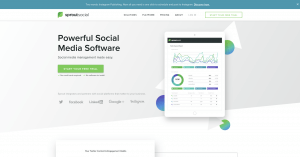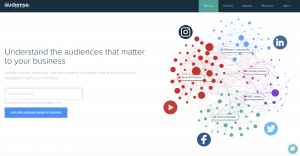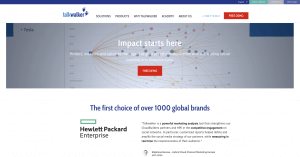A Guide to Social Listening: The Key to an Effective Social Media Strategy
Are you dialed in to what people are saying about your company, brand, or industry? Perhaps you’ve conducted some focus groups and you try to stay up-to-date on industry journals, but the best way to find out what consumers really think about your industry — what they love, where their pain points are — is by engaging in social listening.
Social listening is monitoring and responding to conversations that are naturally occurring about your brand. For instance, recently the actress, Kristen Bell, wrote a letter to the pasta company, Banza, to express how much she liked their pasta. Banza responded by sending her a box of their pasta, custom packaged for Bell, espousing her charm, humor, range and many other fun compliments where they would normally list ingredients. Bell was thrilled and shared an Instagram story about the exchange that has since been viewed by hundreds of thousands of her followers.
Another great example is from one of Europe’s oldest vacuum cleaner companies, Zelmer. Zelmer noticed an Instagram user’s #zelmer on a post about how her 4-year old son is so enamored with their vacuum that she actually made his birthday cake to resemble one. Zelmer followed up by inviting the family to tour their factory, undoubtedly creating lifelong customers.
With the proliferation of digital platforms, from social sites like Facebook and Instagram, to consumer review sites like Yelp, Angie’s List or Epinions.com, people have plenty of ways to provide and share public feedback on products and experiences.
This feedback is gold for your company. It enables you to directly respond to what consumers want in terms of content, advertising, products and services in a way that is human and personal. This free consumer input is a key piece of business intelligence that can inform your strategies and help you to truly differentiate yourself in the marketplace.
Social Listening vs. Social Monitoring
Social listening is not limited to monitoring and replying to consumer questions and comments. Sure, tracking your social media metrics — online mentions, likes, follows, etc. is a start, but to truly maximize your efforts you’ll want to pay attention to consumers who are talking about your industry, your competitors, and your brand more organically, beyond just the people who are liking your branded content or tagging you in posts.
Then, to elevate your work from monitoring to listening, get responsive — fast. Your efforts should be all about understanding the texture of existing conversations, so that you can amplify positive experiences (like the Banza example) and improve negative experiences, by answering questions, making things easier, and forging a connection even when it doesn’t lead straight to a sale. For example, if you have a handbag company and someone is looking for a bag that you don’t make, but you know where to get it, make the suggestion.
Solving a consumer’s problem may just gain you a new fan, and your competitor will appreciate the referral and perhaps return the favor in the future. Another way to take your social listening strategy to the next level is to engage in strategic partnerships with influencers.
The simplest way to do this is to create a list of users who mention your brand or industry and sort them by their number of followers, prioritizing the people with the largest audiences. Follow them and offer ways to collaborate. Maybe you have a 1-day sale coming up or a sneak peek experience that you can share with them that will, in turn, provide them with a special opportunity to share with their followers.
Set Your Social Listening Strategy in Motion
The first thing you need to do to set your social listening strategy in motion is to determine what you are actually listening for. While the keywords will likely change over time as you learn more about how people commonly speak about your industry, some ideas to get you started include:
- Your company name and any related social handles
- Names of products affiliated with your company
- Your competitor’s names, social handles, and product names
- Common jargon/buzzwords in your industry
- Names of key people in your company and in your competitors’ companies–most likely C-Suite or public-facing individuals. Be sure to search for common misspellings of their names, too!
Next, cast a wide net of social platforms that you will monitor. You may find that you get nary a mention on Instagram, but that your industry is blowing up on LinkedIn. That fact alone will tell you a lot about the people who are interested in your industry and give you a great entry-point for engagement — whether it’s a one-on-one interaction or through paid advertising.
Keep an eye on your competitors’ social strategies, too. You don’t want to copy them, but you do want to learn from their mistakes. Your ability to successfully navigate the social realm can become a major differentiator for your business, especially in a world where people would rather express a problem through a Twitter post than face the prospect of waiting in a customer service call queue for hours to be heard.
Finally, understand your data (the metrics you gain through social monitoring) and take action. Once you know what is “normal” in terms of digital chatter about your company or industry, you can develop strategies to navigate peaks and valleys.
For instance, in my role as Senior Development Communications Director for Boys & Girls Clubs of America, I’ve learned that back to school season is a great time to roll out new messaging. This is because so much of the American public is talking about topics relevant to our work with youth including the need for school supplies and homework help, combating summer learning loss, and the role that afterschool programs can play in addressing these problems. The attention to these topics is easily gleaned from a combination of traditional media and social monitoring.
Understanding what a typical communication cycle (yearly, quarterly, etc.) looks like for your industry can be a helpful indicator for when you lean in heavy with new content or perhaps when you can take risks with newer, untested strategies.
Tools to Enhance Your Social Listening Strategy
If the thought of mining 25 million Twitter posts a day is daunting, don’t fret. There are a wide array of social media monitoring tools that can make your listening strategy a much lighter lift. Here are just a few TrustRadius reviewed products. You can search reviews of more products from verified users here.

Sprout Social
Sprout Social helps you decipher data around keywords, hashtags, and various conversations to translate it into actionable steps that can improve your marketing and content strategies, as well as the overall customer experience. Their Advanced Listening Suite offers a dashboard for real-time analysis of social conversations, enabling your company to be responsive and agile based on audience feedback. The Premium Listening Reports are helpful for understanding trends in your industry, including keywords or hashtags that can enable you to capitalize on momentum in your industry or identify key moments to differentiate your company.
Additionally, their real-time brand monitoring function allows you to quickly engage in conversations about your brand, elevating your company’s visibility in what can be a crowded marketplace. All plans include a free 30-day trial and pricing ranges from $99/per user per month to $249/per user per month. The higher end of the pricing structure allows you to create custom chatbots to engage your audience with 24/7 support.

Audiense
Audiense prides itself on helping you easily identify your target audiences through location and keyword searches, resulting in actionable insights that help inform your social strategies. The main reports include the audience intelligence report, which identifies all audiences that are germane to your business, and the influencers report that helps you identify influencers within your audience with whom you should build a relationship. The numerous filter options allow you to sort user profiles by affinities, demographics, and professions so that you can customize your messaging for various audience segments.
Pricing starts at $299 a year, with some plans going as high as $359 a month. All plans include unlimited users, audience insight reports, and the ability to export your results to PDF, PowerPoint or most other data visualization tools for presentations.

Talkwalker
Talkwalker is used by over 900 global brands. An effective monitoring tool, it monitors all social and digital media in real-time in 187 languages so that you are always aware of what people are saying about your company, making it a great tool for assessing the health of your brand. It also has powerful image recognition–an important feature considering 80% of social posts contain images. In terms of analyzing data, Talkwalker offers advanced AI-powered sentiment technology, capable of helping you understand customer opinions (including sarcasm and irony) in just seconds.
One of their biggest selling points is that they promise to have you operational, uncovering insights about your audience, in just one day. The basic plan starts out at $8,400 annually for small businesses and $18,000 for corporations. A free demo is available.
Looking for more information on other types of social media monitoring tools? Check out what buyers are saying about these tools and determine if they are a good fit for your strategy.
Was this helpful?